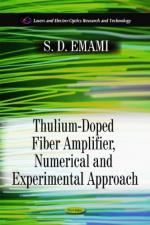|
This section contains 289 words (approx. 1 page at 300 words per page) |
Thulium is a rare earth element denoted by the atomic symbol Tm. It's atomic number is 69, and its atomic weight is 168.9342. Its melting point is 2,813°F (1,545°C) and its boiling point, 3,537°F (1,947°C). It is the rarest of all the rare earth elements with an abundance of 0.2-1.0 parts per million in the earth's crust. The metal has a bright, silvery luster and is malleable, ductile, and soft enough to be cut with a knife.
The discovery of thulium coincides with the 1840s, which were a period of great activity in the field of rare earth research. Largely through the efforts of Carl Gustaf Mosander, the rare earths ceria and yttria were each proven to be highly complex mixtures. Eventually, seventeen new elements were to found in these earths.
From the 1840s until the late 1870s, however, little progress was made in unraveling the rare earth puzzle. Then, within the next decade, ten of the seventeen elemental derivatives from ceria and yttria were discovered. Credit for two of those discoveries goes to Per Teodor Cleve (1840-1905), a professor of chemistry in Uppsala, Sweden. In 1879, Cleve analyzed the earth called erbia identified by Jean-Charles Galissard de Marignac (1817-1894) a year earlier. He found two new elements in this earth, holmium and thulium. He chose the latter name in honor of the ancient name for Scandinavia, Thule.
Thulium is obtained commercially from monazite by ion-exchange and solvent extraction techniques. It is purified by reacting thulium oxide with lanthanum metal. Because of its high cost, there are very limited, major commercial applications. One possible use is as a radiation source for portable X-ray equipment. Also, it may be used for making ceramic magnets for microwave devices.
|
This section contains 289 words (approx. 1 page at 300 words per page) |


